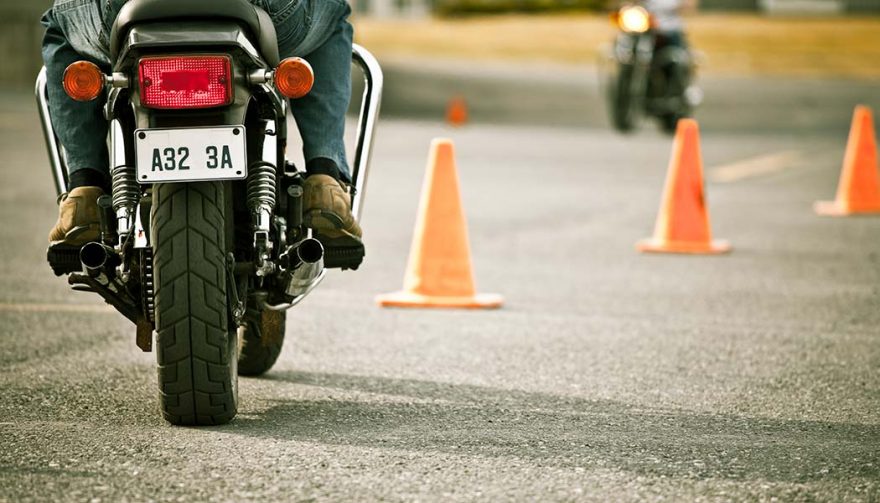
Don't let a friend teach you how to ride a motorcycle, take a class.
How to Ride a Motorcycle: Tips and Tricks for Beginners
So you’ve decided to learn how to ride a motorcycle, it’s a good call. Riding a motorcycle gives you a thrill of adventure and freedom you just can’t get in a car. It’s also a great way to meet new people and even save a lot on gas if you want to use it on a commute.
While motorcycles are a great way to escape the stress of life, they can also be very dangerous if you don’t learn how to ride a motorcycle properly and safely. It goes without saying that you have to stay vigilant to avoid motorcycle accidents, but you have to be extra cautious while you’re first learning. Before you go out to practice, check the weather, you don’t want to be riding a motorcycle in the rain when you’re just starting.
You won’t be able to learn how to ride a motorcycle just reading articles over the internet. As with many things, learning how to ride a motorcycle takes practice. You’ll have to log a lot of miles before you feel completely confident behind the handlebars. However, here are a few tips that might help you out even before you first hop on.
Don’t Let Your Spouse or Best Friend Teach You
Brace yourself. They are going to offer to teach you how to ride a motorcycle. Be smart about it, though, and preserve the relationship.
The best way to learn how to ride a motorcycle is to enroll in a riding and safety course for beginners. Look up the Motorcycle Safety Foundation online and find one of their beginner’s classes near you.
Learning from an instructor, instead of a friend or loved one, will ensure you are exposed to the fundamentals of riding from an experienced teacher.
Get the Right Gear
Before you learn how to ride a motorcycle, you’ll want to make sure you’ve got the right equipment to make sure you’re safe. Get a good helmet, they aren’t cheap. And make sure it fits properly.
Since you’re just beginning and there chances of having an interaction with the asphalt is greater, it is also a good idea to have a suitable motorcycle jacket and gloves.
Understand What Makes a Motorcycle Stay Upright
Contrary to popular opinion, you don’t balance a motorcycle to make it stay upright. When the two wheels turn they act like big gyroscopes. The energy the spinning wheels produce forces the bike into an upright position.
The faster you go, the more the wheels force the bike upright. The bike won’t stay upright if it isn’t in motion. Much like riding a regular bicycle.
Learn About Stability
Since the faster a two-wheeled bike is traveling the more stable it is, the slower it goes the more unstable it becomes. Specifically, at parking lot speeds the bike will be the most difficult to steer, stop and turn without falling over. That’s why the true test of a rider’s skill is not how fast they ride but how well they can handle a bike at a crawl.
Also on that note, bikes have a high center of gravity, and the weight of the rider on top of the bike makes it even more unwieldy at slow speeds. The cure? Keep your feet on the foot pegs so you can better control the bike.
Don’t be like the riders you see dragging their feet on the ground for a block after they leave a traffic light. They have very little control of their bike when their feet are dragging on the pavement.
Learn What Makes a Motorcycle Turn
Look up the the term “countersteering.” You won’t believe me if I explain how it works. To turn a bike at speed, the rider gently steers a little (just a tiny bit) in the opposite direction they want to go.
That makes the bike lean the opposite way, in the direction the rider wants to go. Since countersteering goes against every instinct, it will take at least a solid year of riding before that becomes second nature. Be very careful until it becomes second nature.
Easy Does It on the Throttle
Some drivers have a lead foot on the gas pedal, but with a bike you want to have a light touch with the throttle.
Even small bikes can out accelerate a typical car in stop and go traffic. Treat the throttle like a feather.
The Clutch Makes the Bike Move
If you’ve driven a car with a standard transmission you know how to make it move. Give it just a little gas then gently let out the clutch.
Same with a bike, but I’ve seen people in class get it backwards. Let the clutch out first and the engine will die. So, remember, first apply a little throttle, hold it steady, then let the clutch out slowly.
Get used to feathering the clutch too, because you will need that skill for the next tip.
The Brakes Are to Stop (and Steer)
At speed, the front brake provides most of the bike’s stopping power. The harder you brake, the more weight transfers onto the front tire (because of the bike’s high center of gravity), pressing the tire harder and harder into the pavement, so with that increased traction you can brake even harder.
It’s a good skill to develop. It’s not like driving a car, where in an emergency stop you just slam on the brakes as hard as you can then hope for the best. After you get your motorcycle license, practice panic stops on an empty side street every time you ride.
The rear brake must have an inferiority complex, because it is vastly misunderstood and very underrated. It is really handy, though, when you have to make a sharp U-turn in traffic or in a parking lot.
Remember, the test of skill is how well you can ride a bike at slow speeds. A little pressure on the rear brake while you feather the clutch to keep the bike moving will make that slow U-turn so much easier.





